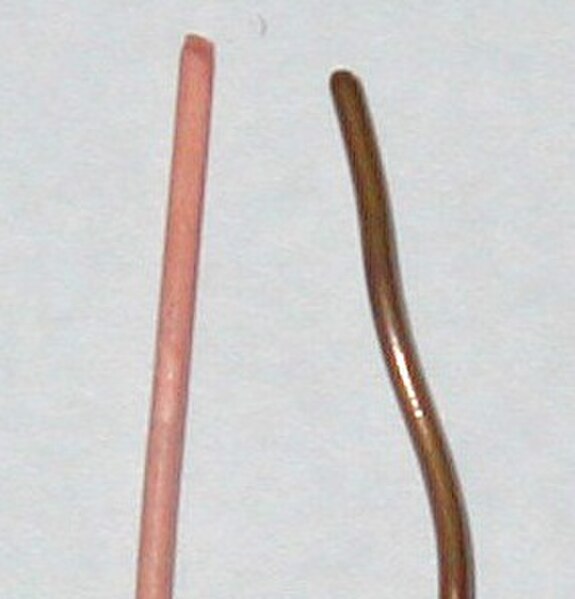The Chalcolithic was an archaeological period characterized by the increasing use of smelted copper. It followed the Neolithic and preceded the Bronze Age. It occurred at different periods in different areas, but was absent in some parts of the world, such as Russia, where there was no well-defined Copper Age between the Stone and Bronze ages. Stone tools were still predominantly used during this period.
Chalcolithic copper mine in Timna Valley, Negev Desert, Israel
A painting of a Copper Age walled settlement, Los Millares, Spain
Copper is a chemical element; it has symbol Cu and atomic number 29. It is a soft, malleable, and ductile metal with very high thermal and electrical conductivity. A freshly exposed surface of pure copper has a pinkish-orange color. Copper is used as a conductor of heat and electricity, as a building material, and as a constituent of various metal alloys, such as sterling silver used in jewelry, cupronickel used to make marine hardware and coins, and constantan used in strain gauges and thermocouples for temperature measurement.
Copper
A copper disc (99.95% pure) made by continuous casting; etched to reveal crystallites
Unoxidized copper wire (left) and oxidized copper wire (right)
The East Tower of the Royal Observatory, Edinburgh, showing the contrast between the refurbished copper installed in 2010 and the green color of the original 1894 copper






